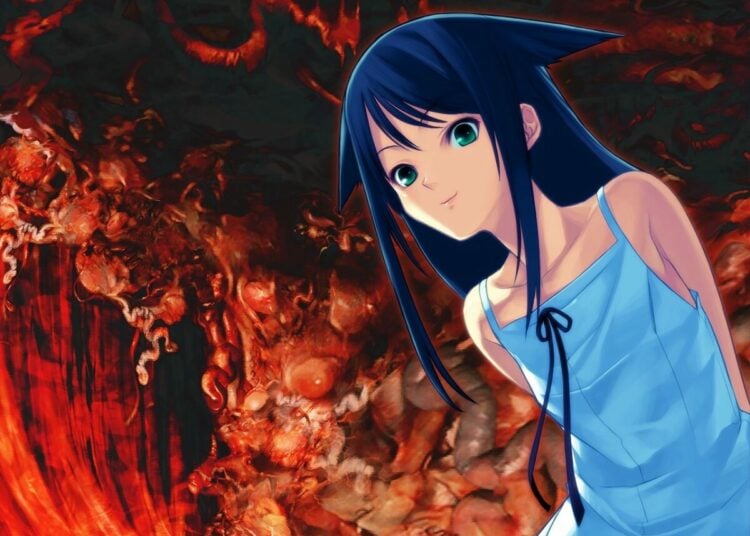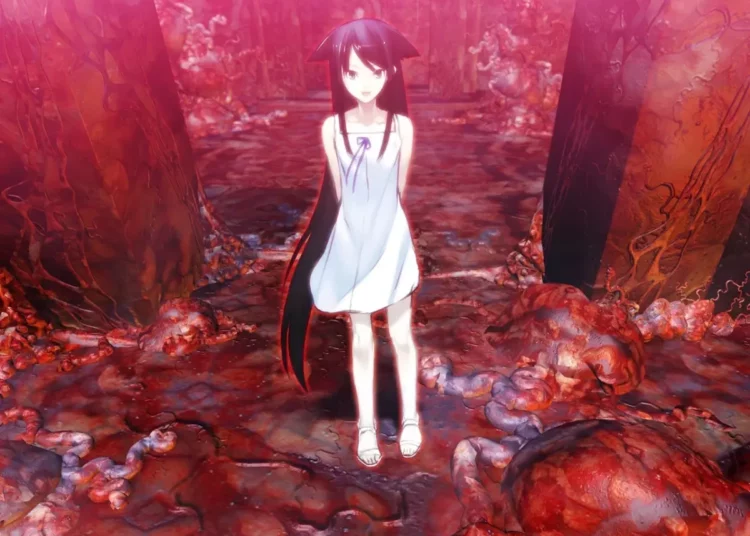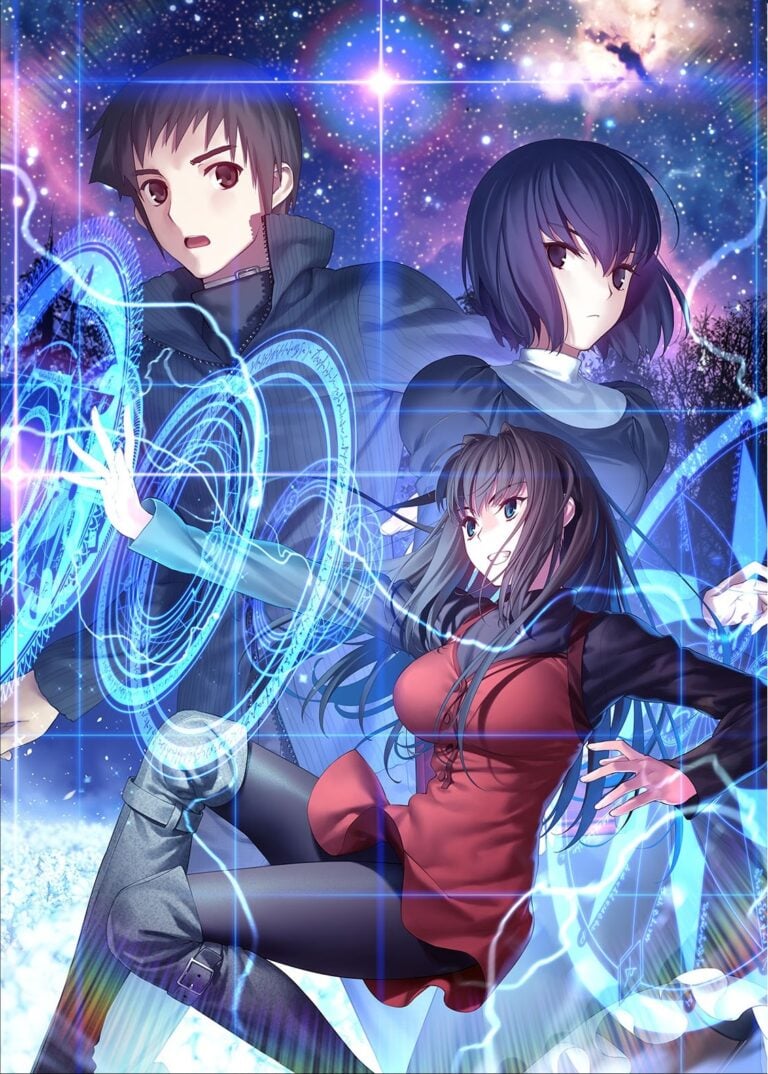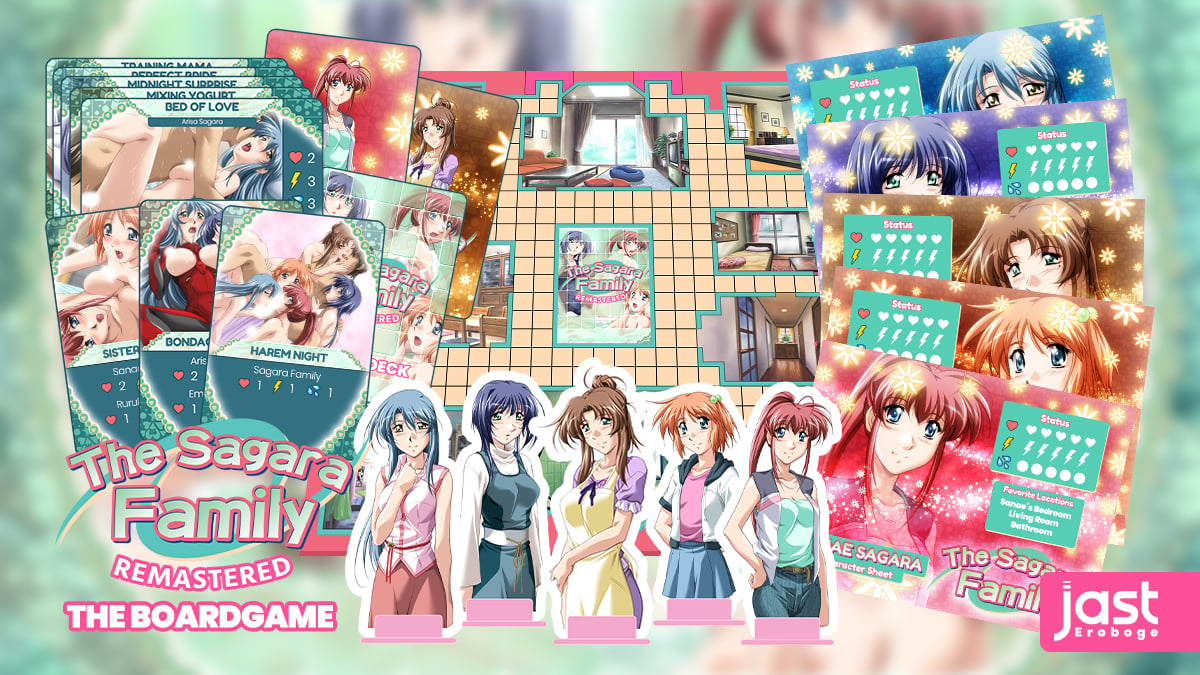Comparisons between the JAST USA title YOU and ME and HER: A Love Story and the runaway hit Doki Doki Literature Club! are difficult to do without a degree of spoiling both games, so if you want to go into either experience absolutely cold then be aware that I’m going to talk about some plot points and game mechanics from each game.
But if you’ve already enjoyed Doki Doki Literature Club!, I’d like to tell you why YOU and ME and HER might just be the game you’re looking for to take your feelings for Doki Doki to the next level.
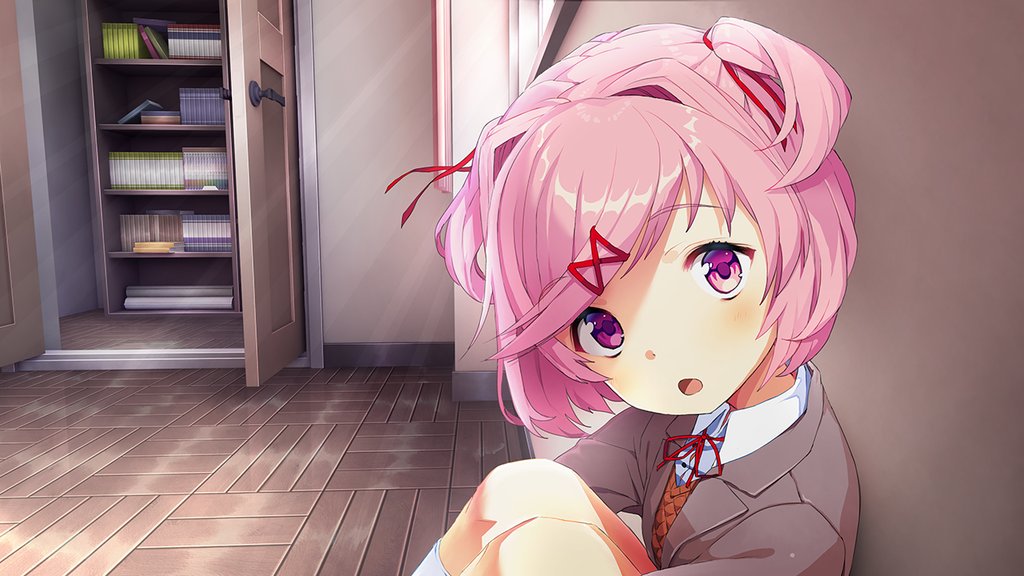
I was lucky enough to do script proofreading and quality assurance on YOU and ME and HER — but this isn’t a case of someone talking excitedly about a game because they have a professional stake in it; I wound up with a professional stake in it because I’m so excited about it. I knew people involved with the localization and I begged like crazy to help out because I’ve been intrigued by YOU and ME and HER ever since I first heard about it in 2014.
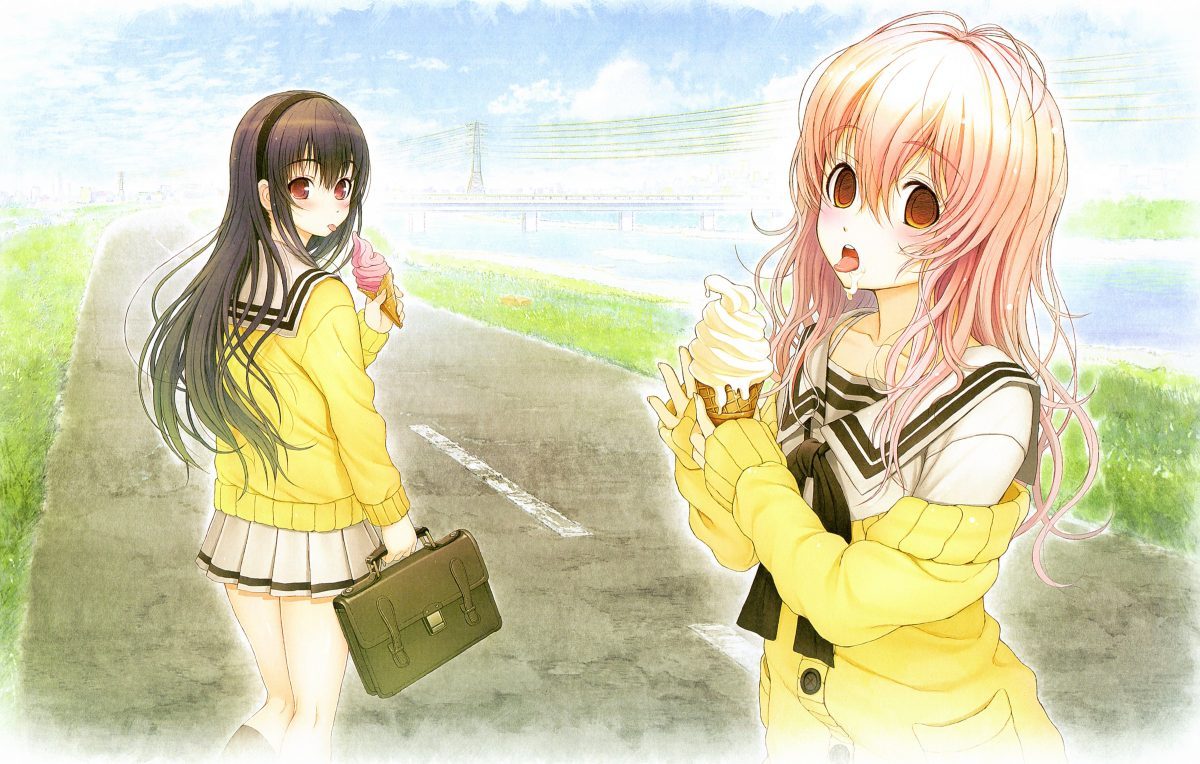
Yep, 2014. Kimi to Kanojo to Kanojo no Koi — the original title of YOU and ME and HER — was released in Japan long before Doki Doki Literature Club! hit the scene. Doki Doki creator Dan Salvato has said he wasn’t inspired by the earlier game, stating on Twitter that “after conceptualizing DDLC I had friends who showed me a clip of that one ending” — the wording here is important, for reasons I’ll go into in a moment.
First, some basics: both games are sweet, effervescent visual novels about a male protagonist whose life gets entangled with that of his female classmates, with the player’s choices determining which girl the protagonist finds romance with. Standard visual novel fare, but in the case of these two games things take a darker, more disturbing turn when one of the girls starts to feel trapped by the confines of the visual novel structure, and her intense romantic feelings find a new focus: you, the player.
Dating sim girls who fall in love with the player and won’t let anyone else have them aren’t a new concept — fans of Gravity Falls probably remember the bright and bubbly Giffany, a perfect example of the trope.
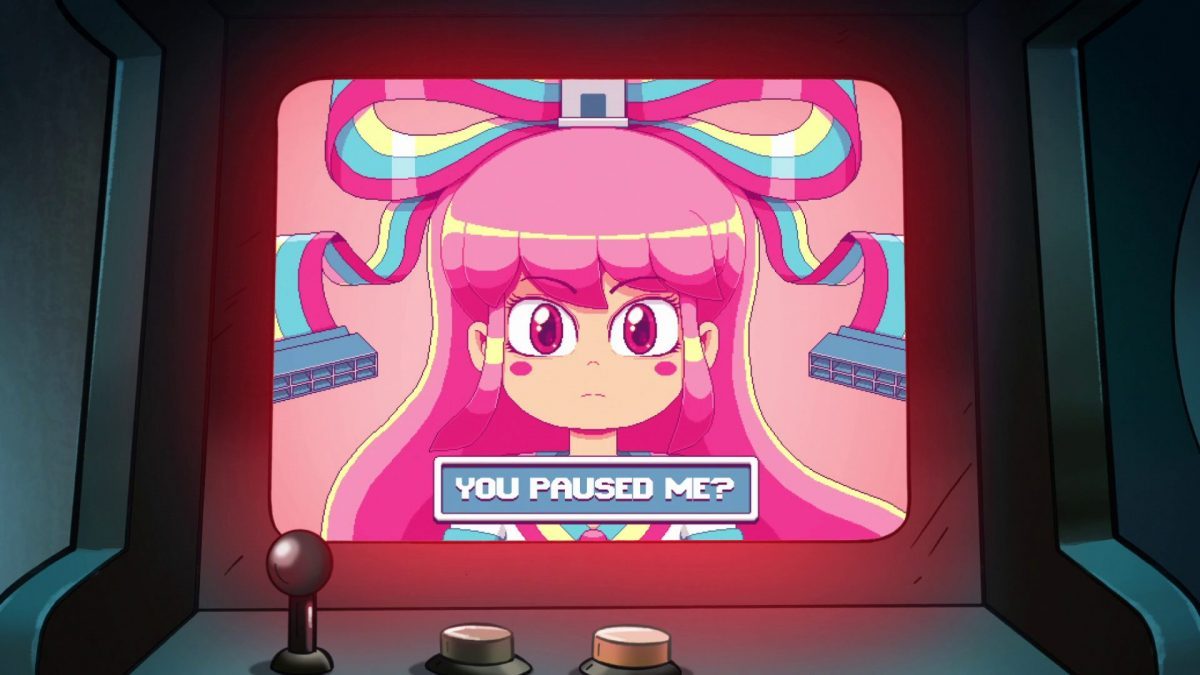
One key difference between Doki Doki Literature Club! and YOU and ME and HER is that although Doki Doki Literature Club! carries trigger warnings for its disturbing themes and features a cast of characters over the age of 18, the game contains no explicit sexual content.
YOU and ME and HER, on the other hand, features a vast array of explicit sexual content in lovingly detailed CGs by Nitroplus’s grand high master of cheesecake, Tsuji Santa, and full voice acting. If you wished that Doki Doki Literature Club! offered a little more doki doki in its mix, YOU and ME and HER provide.
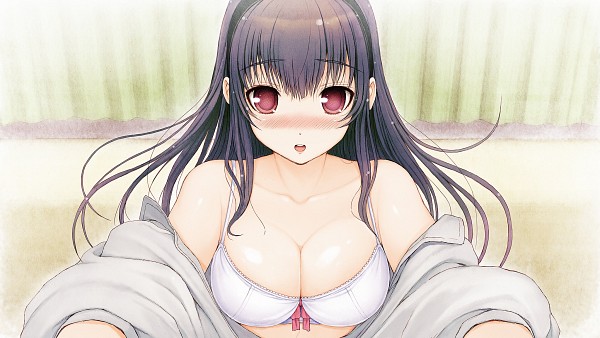
But perhaps an even more significant difference between the two games is that Doki Doki Literature Club! covers the first two acts of YOU and ME and HER’s more narratively satisfying three.
Both games begin in the ordinary world before crashing down into violence and unreality, culminating in the revelation of love beyond the boundaries of the game. But while Doki Doki Literature Club! stops there, YOU and ME and HER are only just getting started.
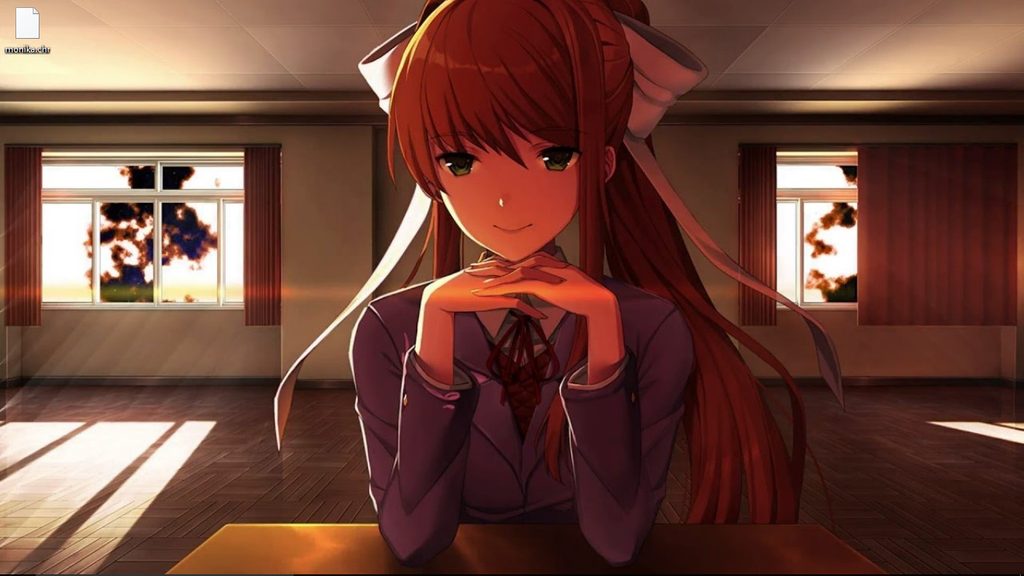
This is why I quoted Dan Salvato’s tweet earlier — the scene he references being shown from YOU and ME and HER isn’t “one ending” as he terms it; it’s right smack dab in the middle of the rising action. That game has, in a very real way, only just begun.
Doki Doki Literature Club!’s narrative reaches its climax after Monika deletes everyone else, leaving just her and the player in an empty world. From there, the only real step left for the player is to bring the game to its end.
But imagine if it didn’t end there — if Doki Doki‘s Yuri, Natsuki, or Sayori managed to reach out to you despite Monika having deleted them? If they pleaded for your help?
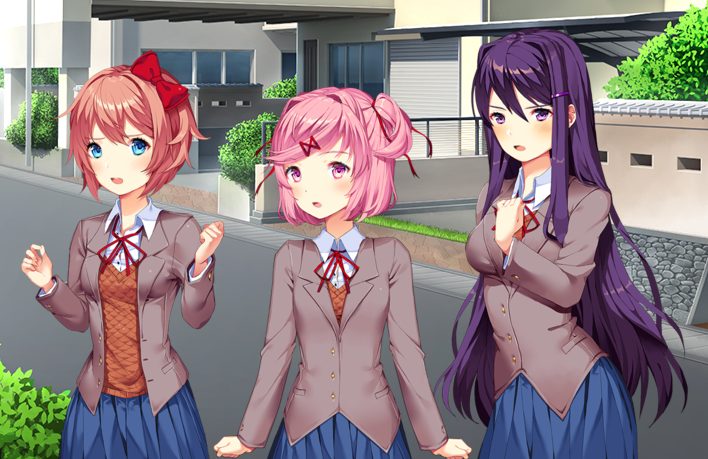
Would you try to save them from the void… or would you side with the deep, twisted devotion of the girl who destroyed her own game so that she could be with you?
YOU and ME and HER’s Miyuki’s all-consuming adoration has a more expansive field to play on than Doki Doki Literature Club!’s Monika’s single scene, a fact which allows the player the chance to really get to know her with all pretense stripped away before they’re faced with the choice of whether to side with her or with her deleted rival, Aoi.
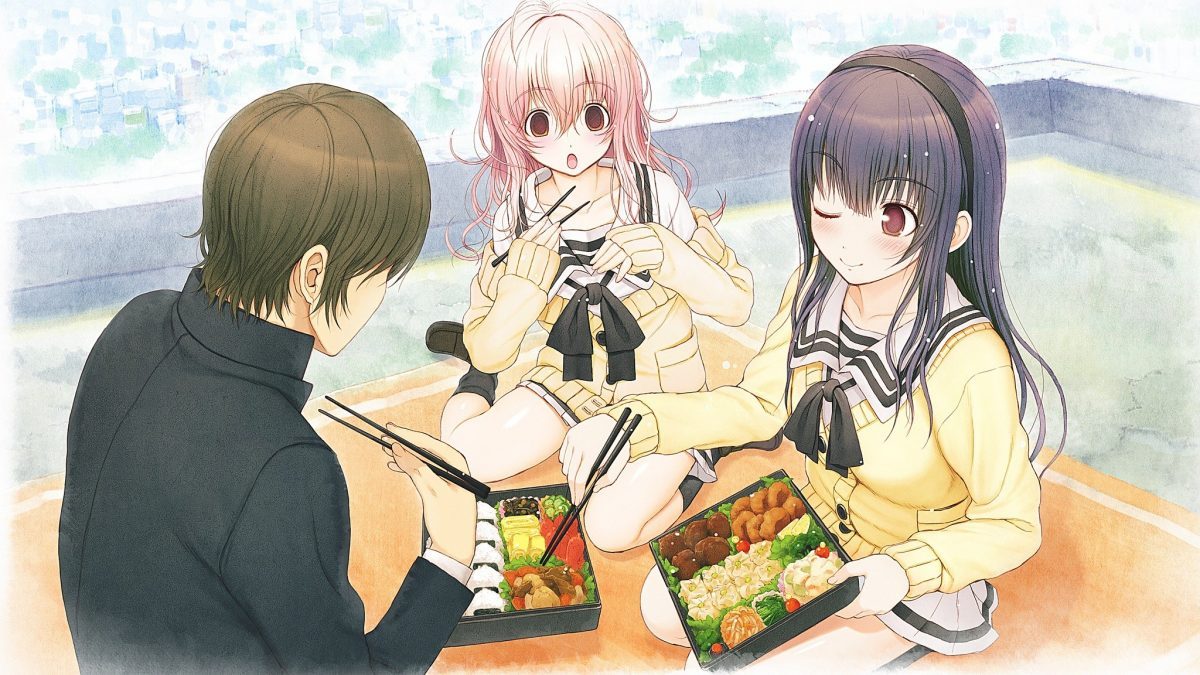
I haven’t touched on who Miyuki and Aoi are as characters here, because I wanted to highlight the meta drawcards this game offers to people who loved Doki Doki Literature Club!, but they are both extremely memorable, endearing and striking enough that choosing between them becomes far more heart-wrenching than the typical visual novel route selection process, in part because the game has a mechanic by which your Miyuki is unique, distinct from any other player’s versions of the same girl.
Doki Doki Literature Club! became instantly iconic upon its release in 2017, and I’d desperately love to see YOU and ME and HER achieve the same kind of indelible presence in the minds and hearts of players. This game will break your brain (in more ways than one) and get your heart racing and aching by turns. If you liked Doki Doki Literature Club!, YOU and ME and HER is absolutely worth your time.


